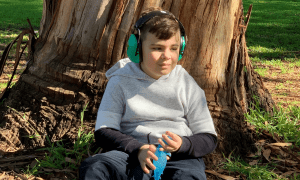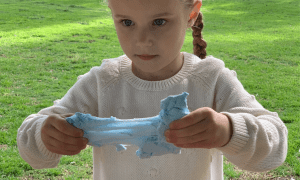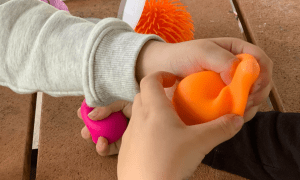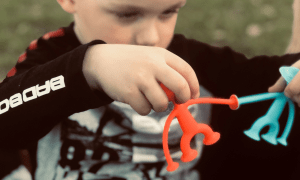The phrase “sensory issues” has become somewhat of a buzzword in the disability sector and beyond, with many parents and carers beginning to wonder if their own child may be affected. While sensory disorders can affect both children and adults, the signs of sensory difficulties usually arise during childhood, particularly as children are developing.
So, what exactly is Sensory Processing Disorder, and how can you help your child manage it?

Featured: Kids Sensory Earmuffs
Sensory Processing Disorder (SPD) is a neurological condition in which individuals have difficulties processing sensory information. Affecting 1 in 20 children, SPD can manifest in one of 2 ways – Hypersensitive or Hyposensitive.
Those with Hypersensitive SPD feel overwhelmed by some senses, which may include touch, sound, sight and more. Because of this, children will often avoid certain types of sensory stimuli, or have an adverse reaction resulting in a meltdown. In contrast, Hyposensitive SPD causes individuals to seek out sensory experiences because they are under-sensitive to stimuli.
While oversensitivity is often more talked about than under-sensitivity, both forms of SPD can cause individuals to feel out of place. This is particularly difficult for children who have not yet developed the skills and self-reflection to voice this to their friends, family and carers. In some cases, children may experience both kinds of SPD, which can cause further confusion for their family and carers as they try to navigate the complexities of the disorder.

Featured: Magical Cloud Putty
Depending on the type of SPD an individual has, there are different signs that may be an indicator of the disorder. For Hypersensitive children, SPD usually manifests in the avoidance or dislike of certain experiences. This can include:
Children with Hyposensitive SPD often show signs that are opposite to Hypersensitive children, seeking out experiences rather than avoiding them. Signs may include:

Featured: Neon Clay Stress Balls
Sensory processing issues can sometimes be a sign of other conditions such as ADHD, autism and anxiety. While some children can experience SPD without another condition, it’s a good idea for a GP, occupational therapist or pediatrician to assess your child to see if there’s anything else going on. A medical professional will be able to help you with a tailored plan to suit your child’s needs – although there are things that a carer can do to help their child manage sensory issues.
The first step in helping a child with SPD is to understand their reactions and triggers. Mealtimes, for example, can be a difficult time for any parent. However, instead of viewing a mealtime reaction as a ‘tantrum’ make note of anything else going on – e.g., it could be that your child is reacting to the texture of a vegetable and serving it mashed or pureed will not cause a triggered response.
Once you understand the child’s triggers, there may be alternatives that you can try to avoid a reaction. For example:

Featured Product: Oogi Family Set
As well as simple changes that may help a person cope with SPD, there are a wide range of products and tools to help individuals manage sensory overload and hyposensitivity. Multi-sensory tools are a great asset for both children and adults with SPD and can help carers gain respite while the person is occupied.
Our selection of Squishy and Stretchy toys are a great range of products designed to provide a simple sensory experience to both hyposensitive and hypersensitive individuals. The soft, fluid nature of the toys is quite calming for people with SPD and may help users from seeking out other experiences (for the under stimulated) or from feeling overwhelmed (in the over stimulated).
Another great line of products is the Tactile and Visual, often called ‘fidgets’ or ‘fidget toys’. You may have seen spinners and fidget cubes make headlines during their rise to popularity, for good reason. Tactile toys can help individuals with SPD to focus and recentre, especially in busy situations that may otherwise overwhelm or cause hyposensitive individuals to become restless.
Need more advice on suitable sensory toys or therapy tools to help manage SPD? Contact us today.

The Sensory Store is a registered business name of Nepean Area Disabilities Organisation Ltd (NADO), a not for profit organisation with over 40 years experience in the disability sector. NDIS Provider Registration Number 4050001493. ABN 83 188 045 596.
Copyright 2022, NADO (Nepean Area Disabilities Organisation Ltd)